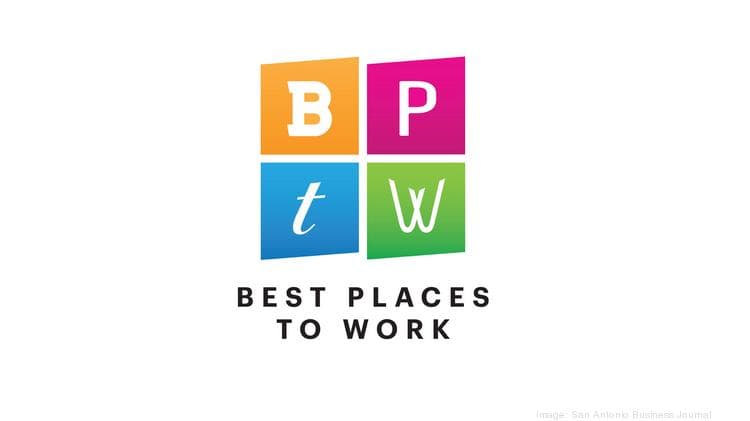A study released last month shows that pay transparency in job postings has more than doubled during the pandemic, increasing 137 percent between February 2020 and February 2023.
“Heightened employee expectations and new laws requiring disclosure in some parts of the country mean more employers are adding salary information to their job postings,” wrote Kathryn Mayer for the Society for Human Resource Management (SHRM).
Austin-based Indeed Hiring Lab, the mega jobs sites economic research arm found that while pay transparency has risen significantly in the past year, driven in part by new regulations requiring disclosure in job postings, increases were also observed even in areas without these pay disclosure areas.
“More than 40 percent of U.S. job postings on Indeed now include employer-provided salary information, an increase of 137 percent in the last years, due in large part to the introduction of transparency legislation and the tight U.S. labor market – and the trend continues to rise,” said the researchers. “Despite the overall increase in salary visibility in postings, the numbers vary significantly based on geography and occupation.”
Pay Transparency Legislation Kickstarts the Movement
Colorado was the first state to pass pay transparency legislation in 2019 and at that time just 16 percent of U.S. job postings on Indeed provided salary information.
Since then, California, Washington, and New York City have all followed with pay transparency legislation and the state of New York is expected to pass legislation later this year.
“Given these laws and growing public interest in the topic, it’s no surprise the percentage of job postings with salary information has started to increase,” said the researcher.
Pay transparency inched up slowly to 18.4 percent of job postings in February 2020 and jumped to nearly 30 percent during 2021 before skyrocketing during 2022 to reach 43.7 percent in February 2023.
Tight Labor Market, Expectations Also Push Pay Transparency
Indeed believes that legislation was not the sole driver of the movement as more employers were willing to provide salary information in listings to attract workers in a labor market with far more openings than available workers.
“While rising transparency can be attributed somewhat to new laws, it also appears to have been pushed up by the tight US labor market,” concluded the researchers. “Growth in transparency may also be partially attributable to the rise in remote work, since many state regulations apply to firms that employ at least one worker in their state, even if that position is remote.”
Basically, if your company was headquartered in one of the 46 states without pay transparency, but you wanted the option of hiring talent from one of the areas with pay transparency to work remotely, such as California, then salary information would need to be posted with the job opening.
Pay transparency is also becoming more prevalent across the country as more and more job seekers expect it from companies.
“One big reason for the spike in pay transparency is that employees—and job seekers—are calling for the practice. That is especially important as the job market remains largely employee-driven; employers are looking for a variety of ways to attract and retain talent, and disclosing salaries is one way to do so,” wrote Mayer.
Employers Find a Benefit to Pay Transparency Says Survey
Recent research from SHRM finds that employers are also finding some benefits to pay transparency.
The survey found that some 67 percent of HR professionals said their organization voluntarily posts starting pay in jobs sometimes, often, or always even though it was not required by law in their area.
The trend appears to be picking up steam as 32 percent of the organizations voluntarily posting pay information in job listings started doing so within the past year.
“As employers consider how best to approach pay transparency, some have raised concerns that posting pay ranges may lead to negative outcomes, such as fewer people being interested in applying,” said the SHRM survey. “However, data from organizations that list starting pay on job postings presents some favorable outcomes.”
The survey found that:
- 70 percent of organizations that list pay ranges on job postings say that doing so has led to more people applying to their postings.
- 66 percent of organizations that list pay ranges on job postings say that doing so has increased the quality of applicants they are seeing.
- 65 percent of organizations that list pay ranges on job postings say that doing so makes them more competitive in attracting top talent.
The survey also found pay transparency also influenced applicant behavior in the following ways:
- 82 percent of U.S. workers are more likely to consider applying to a job if the pay range is listed in the job posting.
- 74 percent of U.S. workers say that they are less interested in applying to job postings that do not list a pay range.
- 73 percent of U.S. workers are more likely to trust organizations that provide pay ranges in postings than ones that do not.
A Look at the “Top 10s” from the Indeed Pay Transparency Survey
It should come as no surprise that metropolitan areas with pay transparency legislation had the highest number of job postings with salary visibility. The Top 10 from the Indeed research:
- Denver-Aurora-Lakewood, CO 76.7 percent
- Colorado Springs, CO 74.6 percent
- Spokane-Spokane Valley, WA 71.2 percent
- Seattle-Tacoma-Bellevue, WA 70.1 percent
- Oxnard-Thousand Oaks-Ventura, CA 69.8 percent
- Modesto, CA 69.5 percent
- Sacramento-Roseville-Folsom, CA 68.5 percent
- Stockton, CA 66.7 percent
- Los Angeles-Long Beach-Anaheim, CA 65.6 percent
- San Diego-Chula Vista-Carlsbad, CA 64.4 percent
Areas with pay transparency also accounted for those places with the fastest share of job postings with a salary listed. The Top 10 in percent of increase:
- San Jose-Sunnyvale-Santa Clara, CA +267.6 percent
- San Francisco-Oakland-Berkeley, CA +184.8 percent
- Seattle-Tacoma-Bellevue, WA +165.5 percent
- Bakersfield, CA +158.7 percent
- Modesto, CA +145.6 percent
- Oxnard-Thousand Oaks-Ventura, CA +143.2 percent
- San Diego-Chula Vista-Carlsbad, CA +143.0 percent
- New York-Newark-Jersey City, NY-NJ-PA +137.7 percent
- Fresno, CA +129.8 percent
- Los Angeles-Long Beach-Anaheim, CA +122.4 percent
Areas without pay transparency, however, were also moving towards adding salary on job listings without any legislative push. The Top 10 in terms of job listings with salary:
- Provo-Orem, UT 54.8 percent
- Salt Lake City, UT 50.5 percent
- Ogden-Clearfield, UT 50.1 percent
- Madison, WI 48.3 percent
- Boise City, ID 47.4 percent
- Lexington-Fayette, KY 47.3 percent
- North Port-Sarasota-Bradenton, FL 46.6 percent
- Albuquerque, NM 45.5 percent
- Cape Coral-Fort Myers, FL 45.2 percent
- Omaha-Council Bluffs, NE-IA 44.3 percent
And the Top 10 fastest growing areas (in percentage increase) to list salary on job postings without legal requirements:
- Urban Honolulu, HI +77 percent
- Bridgeport-Stamford-Norwalk, CT +63.2 percent
- Boston-Cambridge-Newton, MA-NH +62.0 percent
- Albuquerque, NM +60.8 percent
- Washington-Arlington-Alexandria, DC-VA-MD-WV +60.3 percent
- Hartford-East Hartford-Middletown, CT +60.2 percent
- Wichita, KS +55.9 percent
- St. Louis, MO-IL +55.9 percent
- Nashville-Davidson-Murfreesboro-Franklin, TN +53.4 percent
- Raleigh-Cary, NC. +52.0 percent
The South scored lowest in pay transparency in the Indeed survey with the metro area with the lowest percentage of job listings with salary posted:
- McAllen-Edinburg-Mission, TX 29.9 percent
- Jackson, MS 30.7 percent
- Memphis, TN-MS-AR 32.1 percent
- Winston-Salem, NC 32.7 percent
- El Paso, TX 33.1 percent
- Augusta-Richmond County, GA-SC 33.2 percent
- New Orleans-Metairie, LA 33.3 percent
- Fayetteville-Springdale-Rogers, AR 33.5 percent
- Baton Rouge, LA 33.8 percent
- Louisville-Jefferson County, KY-IN, 33.9 percent
Finally, the Indeed survey found the following 5 occupations for the highest percentage of job listings with a salary posted and the 5 occupations with the least percentage of job postings with a salary listed:
Most transparent:
- Childcare 75.9 percent
- Security and Public Safety 68.3 percent
- Dental 63.1 percent
- Personal Care and Home Health 61.8 percent
- Real Estate 61.4 percent
Least transparent:
- Industrial Engineering 30.6 percent
- Chemical Engineering 31.4 percent
- Banking and Finance 31.8 percent
- Management 32.8 percent
- Scientific Research and Development 33.1 percent






